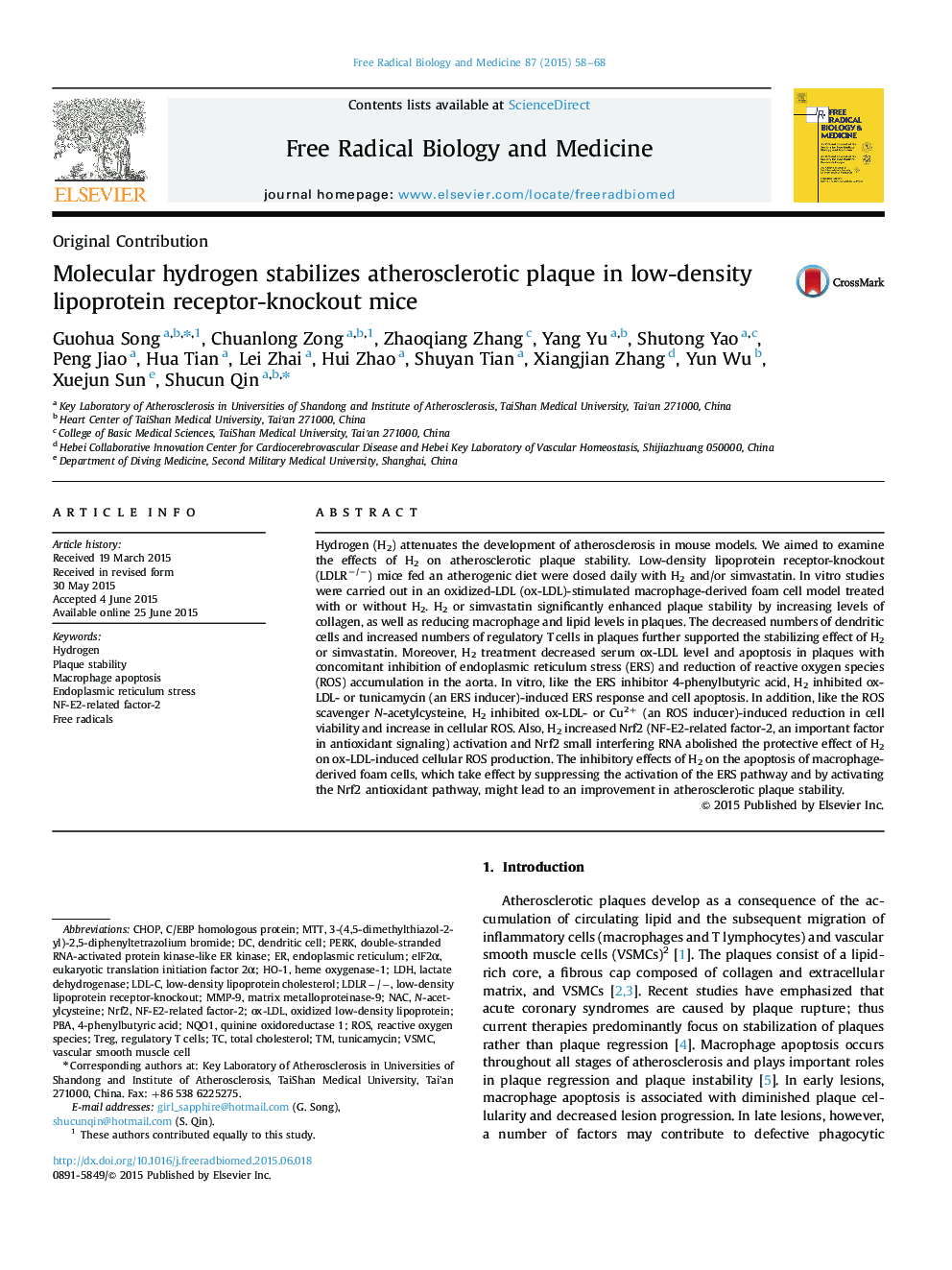| Article ID | Journal | Published Year | Pages | File Type |
|---|---|---|---|---|
| 8268700 | Free Radical Biology and Medicine | 2015 | 11 Pages |
Abstract
Hydrogen (H2) attenuates the development of atherosclerosis in mouse models. We aimed to examine the effects of H2 on atherosclerotic plaque stability. Low-density lipoprotein receptor-knockout (LDLRâ/â) mice fed an atherogenic diet were dosed daily with H2 and/or simvastatin. In vitro studies were carried out in an oxidized-LDL (ox-LDL)-stimulated macrophage-derived foam cell model treated with or without H2. H2 or simvastatin significantly enhanced plaque stability by increasing levels of collagen, as well as reducing macrophage and lipid levels in plaques. The decreased numbers of dendritic cells and increased numbers of regulatory T cells in plaques further supported the stabilizing effect of H2 or simvastatin. Moreover, H2 treatment decreased serum ox-LDL level and apoptosis in plaques with concomitant inhibition of endoplasmic reticulum stress (ERS) and reduction of reactive oxygen species (ROS) accumulation in the aorta. In vitro, like the ERS inhibitor 4-phenylbutyric acid, H2 inhibited ox-LDL- or tunicamycin (an ERS inducer)-induced ERS response and cell apoptosis. In addition, like the ROS scavenger N-acetylcysteine, H2 inhibited ox-LDL- or Cu2+ (an ROS inducer)-induced reduction in cell viability and increase in cellular ROS. Also, H2 increased Nrf2 (NF-E2-related factor-2, an important factor in antioxidant signaling) activation and Nrf2 small interfering RNA abolished the protective effect of H2 on ox-LDL-induced cellular ROS production. The inhibitory effects of H2 on the apoptosis of macrophage-derived foam cells, which take effect by suppressing the activation of the ERS pathway and by activating the Nrf2 antioxidant pathway, might lead to an improvement in atherosclerotic plaque stability.
Keywords
VSMCLDL-CMMP-9Heme oxygenase-1HO-1NACNrf2TregPBANQO1tunicamycinOx-LDLeIF2α3-(4,5-dimethylthiazol-2-yl)-2,5-diphenyltetrazolium bromideC/EBP homologous proteinLDLR−/−MTTN-acetylcysteineROSEndoplasmic reticulum stress4-phenylbutyric acidCHOPFree radicalsDendritic cellVascular smooth muscle cellRegulatory T cellsendoplasmic reticulumeukaryotic translation initiation factor 2αNF-E2-related factor-2lactate dehydrogenaseLDHOxidized low-density lipoproteinMatrix metalloproteinase-9HydrogenPlaque stabilityPERKtotal cholesterolLow-density lipoprotein cholesterolReactive oxygen species
Related Topics
Life Sciences
Biochemistry, Genetics and Molecular Biology
Ageing
Authors
Guohua Song, Chuanlong Zong, Zhaoqiang Zhang, Yang Yu, Shutong Yao, Peng Jiao, Hua Tian, Lei Zhai, Hui Zhao, Shuyan Tian, Xiangjian Zhang, Yun Wu, Xuejun Sun, Shucun Qin,
